Wood glues tend is one way to join two pieces of wood together because it creates a stronger bond than the wood itself. And unlike metal fasteners, wood glue does not cover the surface without leaving holes. However, for wood glue to be effective, it needs time to dry and reach full strength.
With so many different types and brands of woodworking glue on the market, it can be difficult to figure out how long to wait for the clips to come loose before you can reuse the newly applied jointly.
- How long does wood glue dry?
- What is wood glue?
- What types of wood glue are there?
- Polyvinyl acetate
- PVA wood glues
- Cyanoacrylate glue for wood
- Polyurethane glue
- Aliphatic resins glue for wood
- Hide glue
- Epoxy glues
- CA glue
- Hot glue
- Factors affecting the drying time of glue for wood
- Temperatures
- Humidity
- Moisture
- Ventilation
- Wood type
- Comparison of wood glue drying time and curing time
- Wood glue curing time
- Time to adjust the wood glue
- Tips to speed up the drying process
- Heat
- Hardener
- Air
- Glue thickness
- Avoid wet wood
- Use less glue
- Use pieces of dry wood
- FAQ
- How long should glued wood be clamped?
- How do you make wood glue harden faster?
- How long should wood glue set before sanding?
- Does wood glue set hard?
- What happens if you don’t let the wood glue dry?
- Why is my wood glue not drying?
- Conclusion
How long does wood glue dry?
Many factors affect how long wood glue drying time including temperature, humidity, wood type, and moisture content. This article explains the process by discussing the drying times of some of the most popular wood adhesives and how these factors affect time.
Factors that can affect the drying time of your selected glue and ways to accelerate drying.
What is wood glue?
Wood glue dry is usually used to connect wood pieces together. For example, if you are building a wooden frame, you can use wood glue to hold the pieces of wood together.
Wood glue is specifically formulated to bond wood to itself and other porous materials such as paper and fabric. There are different types of wood glue that you can use depending on the project.
It is not really hard to glue wood together. Just learn the information in the article.
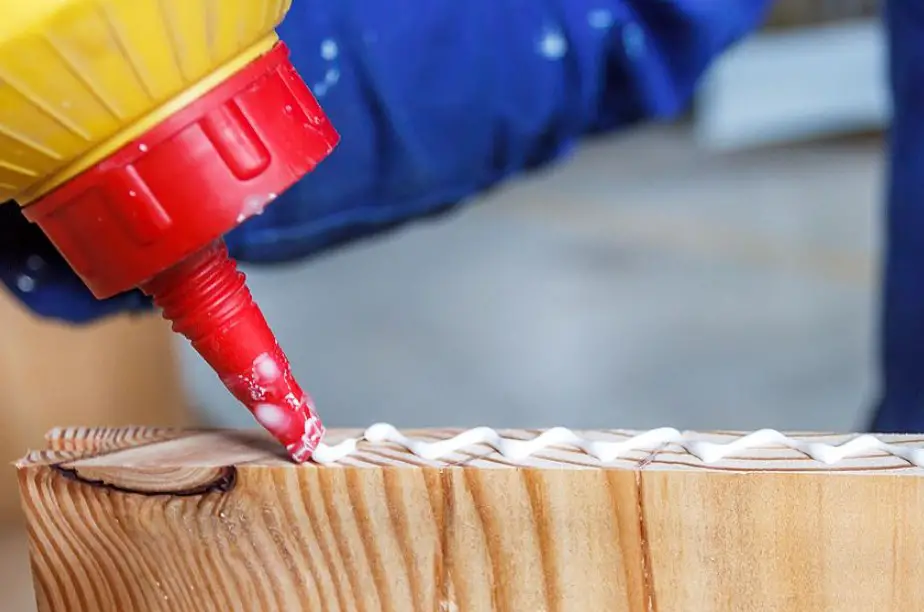
What types of wood glue are there?
Before starting your project, you should be aware of the different wood glue options on the market. Each has a different purpose and a different drying time.
The main types of wood glue are:
- Polyvinyl acetate
- PVA wood glue
- Cyanoacrylate glue
- Polyurethane glue
- Aliphatic resin wood glues
- Hide the glue
- Epoxy glue
- CA glue
- Hot glues
Polyvinyl acetate
The most common type of wood glue is pale yellow and sticky. This material is water-based and dries when the water in it starts to evaporate into the air.
Many PVA types of glue work well for many woodworking jobs because they create a bond that is stronger than the wood it is bonding with. Most PVA glue takes 30 minutes to an hour to dry and takes about a day.
PVA wood glues
PVA wood glue or polyvinyl acetate glue is a modern adhesive. This product has replaced skin glue, which we will talk about later. Some examples of PVA glue for wood are Elmer’s glue, Gorilla glue, and Titebond wood glue.
Here are some benefits of PVA wood glue:
- It is easier to find and buy in stores
- It does not turn yellow over time and remains elastic
- Harmless fumes
This is one of the most popular wood glues that most people use in their projects. There are different types of PVA wood glues. Some are waterproof, while others are tinted. This is a great all-around product available when gluing joiners.

Cyanoacrylate glue for wood
Cyanoacrylate wood glues are more commonly known as superglue, or instant glues, due to their extremely fast-drying properties. These adhesives set in seconds and form strong bonds in minutes.
Superglue can work in less than 30 seconds to create a strong initial bond on wood or other materials. However, it takes about 8 hours to reach full power.
While these adhesives can cure relatively quickly and speed up your project schedule, the bond they create is never something you want to rely on as a permanent solution.
Instead, carpenters usually use CA glue to create a temporary joint that is completed shortly after it is set.
Cyanoacrylate adhesives are not as strong as PVA or epoxy after drying. For this reason, they are commonly used to glue inserts and repair small wood chips.
You can also use superglue as a crack filler by mixing it with sawdust. This adhesive dries by absorbing moisture from the surrounding air and emitting a transient characteristic odor when the joint is formed.
Polyurethane glue
Unlike PVA, polyurethane glue is not a water-based adhesive. Although it is high in VOC (volatile organic compounds), it also has advantages over PVA adhesive. Dries when exposed to moisture and is ideal for use on damp wood.
If you are familiar with gorilla glue, you are familiar with polyurethane glue. This adhesive usually expands as it dries, creating an extremely strong bond with the surfaces being bonded.
As such, you usually have to scrape off excess glue and let it dry when you use it.
This waterproof glue is versatile and can be used on metal and wood. Because polyurethane glue is mostly water-resistant, it is a great choice for outdoor woodworking.
These adhesives are available in both fast and slow-drying forms. Typical drying times for faster options are 10 to 15 minutes, while slower options may take 30 minutes or more.
It also does not penetrate porous wood, which can cause it to swell. Polyurethane glue usually cures in about two hours and takes 24 hours to dry completely.
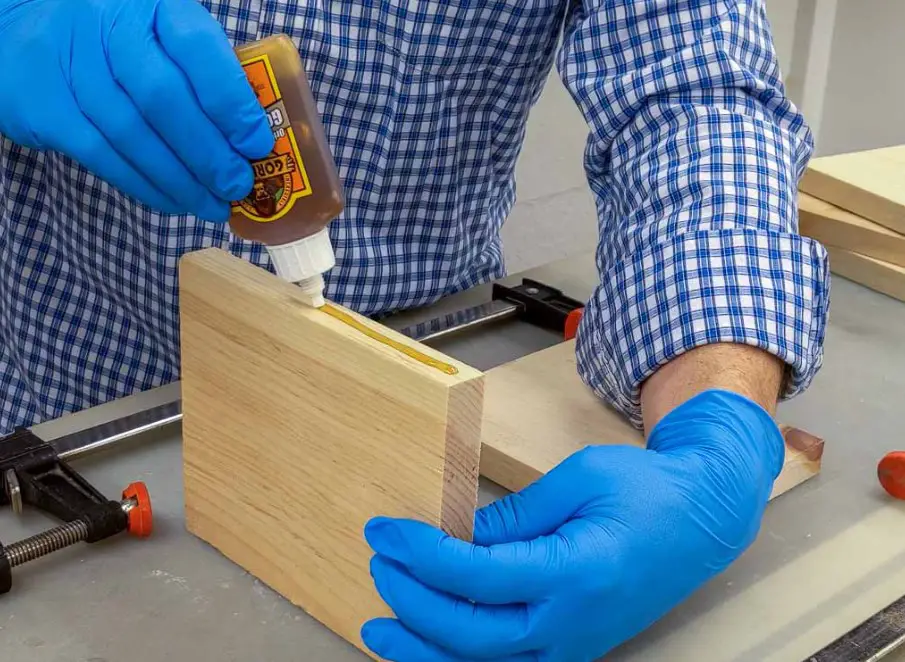
Aliphatic resins glue for wood
Aliphatic glues are another form of modified PVA glue. Therefore, they contain the same polyvinyl acetate polymer as standard PVA glue.
Aliphatic resin glue is also called yellow glue or glue for wood. They get their nickname yellow glue because of the yellow color that most species take on when they dry.
Other grades of this glue turn brown when dry, but this is the same product.
Aliphatic resin adhesives have similar drying times to PVA wood adhesives because they share the same basic formula. You should press the standard varieties for 10-15 minutes, but the slower varieties require a longer drying time – up to 25-30 minutes.
Like PVA adhesives, aliphatic adhesives cure to full strength in about 24 hours.

Hide glue
As the name suggests, hide glue is made from animal skins.
Hide glue is available in the market for traditional woodworking methods. There are synthetic versions, but if you’re smart, you can make your own.
One of the best options for leather glue is Titebond hide glue. It is a synthetic material with stronger adhesion than the natural glue selection. Liquid skin glue is a bit more controversial than other bonding methods you can find on the market.
Hide glue dries relatively quickly considering its natural formula. They are usually firm and dry enough to be resolved in 20 minutes.
However, as with most of the glues reviewed, it takes approximately 24 hours for liquid hide glue to reach its full strength.
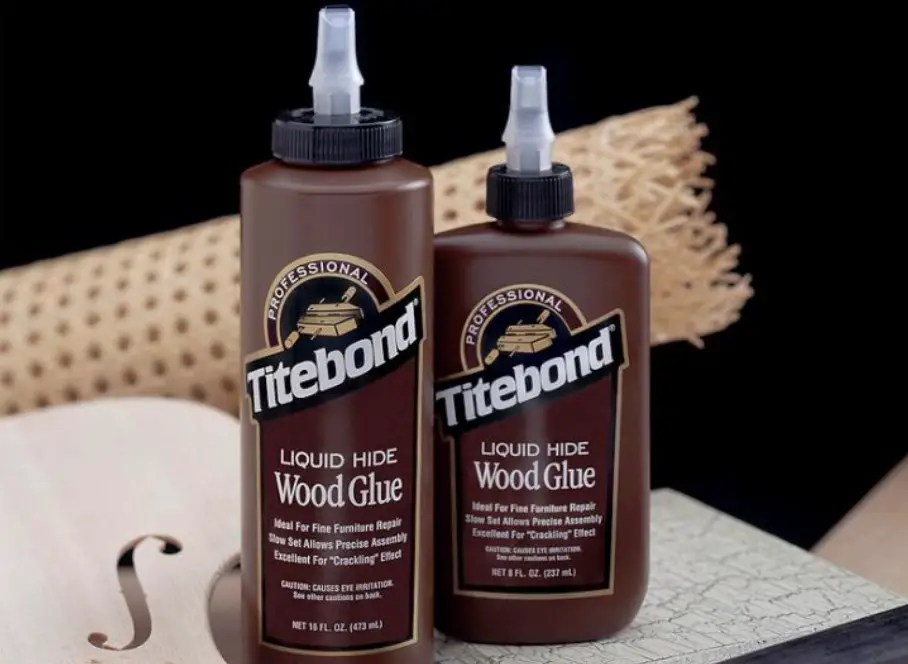
Epoxy glues
Epoxy glue is a common adhesive in woodworking circles. It uses resin and a hardener to create a strong bond that can replace other mechanical methods of gluing wood.
After mixing, the hardener and resin form the epoxy adhesive.
Epoxy glues can be used as a filler for cracks in wood and as an adhesive to glue pieces of wood together. It is waterproof and therefore suitable for outdoor projects.
Wood epoxies are available in several varieties, the most popular of which is a combination of resin and hardener.
While epoxies may be known for use on wood, they are formulated to bond a variety of materials other than wood. Excellent water and chemical resistance make them ideal for use in various environments and outdoor applications.
Epoxy drying time can be as little as one minute, and quick-setting types reach full strength in less than ten minutes.
Slower-drying alternatives can take up to 30 minutes to dry, as do most of the slow-drying wood glues discussed in this article. Most epoxies take about 2 hours to set and reach full strength.

CA glue
CA glue or cyanoacrylate glue for wood is usually used as superglue. Super Glue and Krazy Glue are two common types of CA glue.
CA wood glue is more expensive, but a great option.
Here are some of the benefits of CA glue:
- Excellent storage properties
- Clear time and quick recovery
- Accuracy is easier
Although CA glue has excellent retention properties, it is not the strongest. Don’t expect it to hold like polyurethane wood glue or hot glue. This is better for more detailed repairs that may be needed.
Hot glue
Hot glue is also called hot melt adhesives. They are available as a stick that must be melted by pushing it through the nozzle of a hot glue gun. Most woodworkers avoid using hot glue because it tends to melt and liquefy when heated.
Their poor heat resistance puts them at a disadvantage for serious woodworking projects that may be exposed to varying temperature conditions.
However, depending on the amount of glue used, hot glue can last less than a minute. In addition, it often takes only five minutes for the adhesive to set and reach its full strength.

Factors affecting the drying time of glue for wood
Different types of glue for wood have different drying times. However, the type of glue you use isn’t the only factor that determines how long it takes to harden. Several factors affect the time of wood glue drying.
Temperatures
Temperature is an important factor in any drying process. Most wood glues dry faster in high-temperature environments and harden in the shortest possible time, creating the desired strong bonds.
On the other hand, cold temperatures can lead to long waiting times, as glue for wood dries slowly at low temperatures.
While high temperatures can speed up the drying of glue for wood, it can also cause some types of glue to melt if extreme peaks are reached. Fortunately, most types of glue for wood are resistant to high heat and do not melt on contact.
Below, you can see the ideal operating temperature for 5 commonly used wood glues.
Type of glue for wood ideal temperature range
- Polyvinyl acetate (PVA) 50-77 °F (10-25 °C)
- Polyurethane 50-95 °F (10-35 °C)
- Epoxy 41-95 °F (5-35 °C)
- Hide glue 120-150 °F (48-65 °C)
- Cyanoacrylate (CA) 41-200 °F (5-93 °C)
Humidity
Humidity is an important factor that affects the drying time of most things, including wood glue. High-humidity environments are characterized by higher humidity in the ambient air, which prevents moisture from evaporating from the adhesive.
As the glue eventually hardens and hardens, it becomes difficult for it to do this, thus prolonging the drying process.
The higher the humidity, the more moisture in the surrounding air. This humid air cannot sufficiently support the evaporation of wood glue moisture. For this reason, some adhesives, such as PVA, dry faster in dry air than in humid air.
Moisture
Moisture problems are often caused by the stickiness of wood. If the wood is damp or has some moisture, it can delay the drying time of the glue.
Wood glue usually dries by evaporating moisture into the surrounding air and through the wood. However, if the wood already has a high moisture content, the moisture in the wood glue cannot be removed from the wood, resulting in a slower drying process.
Therefore, using dry wood can significantly reduce drying time and speed up project completion.
Ventilation
Proper air circulation removes moisture from the atmosphere and creates the dry air needed for faster drying. This allows the glue to dry faster outdoors in relatively windy weather or indoors with open windows or a fan on.
On the other hand, poor ventilation has the opposite effect and reduces drying and curing times.
Wood type
Very porous wood may take longer for the glue to dry because such wood requires more layers of glue to form a bond. These multiple pores tend to absorb the glue and create a thick layer of glue that naturally takes longer to dry than a thin layer of wood glue.
The glue dries faster in denser woods with fewer pores that absorb the glue. While the type of wood is not as important in determining how quickly wood adhesive dries, it should still be considered, especially when working with more exotic woods.
Some tropical woods are oilier than others, making it difficult for the wood to absorb the water-based adhesive’s moisture, which reduces drying time.
Epoxy or polyurethane is recommended for bonding oiled wood. Cyanoacrylates can also be used in small areas. If you don’t want to use water-based wood glue, sand it down or use a thinner to degrease the wood surface.
Some woods are also denser than others, so they take longer to dry. For example, hardwoods are denser than softwoods. This higher density means that there is less room in their wooden structure to hold moisture.
The more moisture a piece of wood holds, the faster a water-based wood glue like PVA dries.
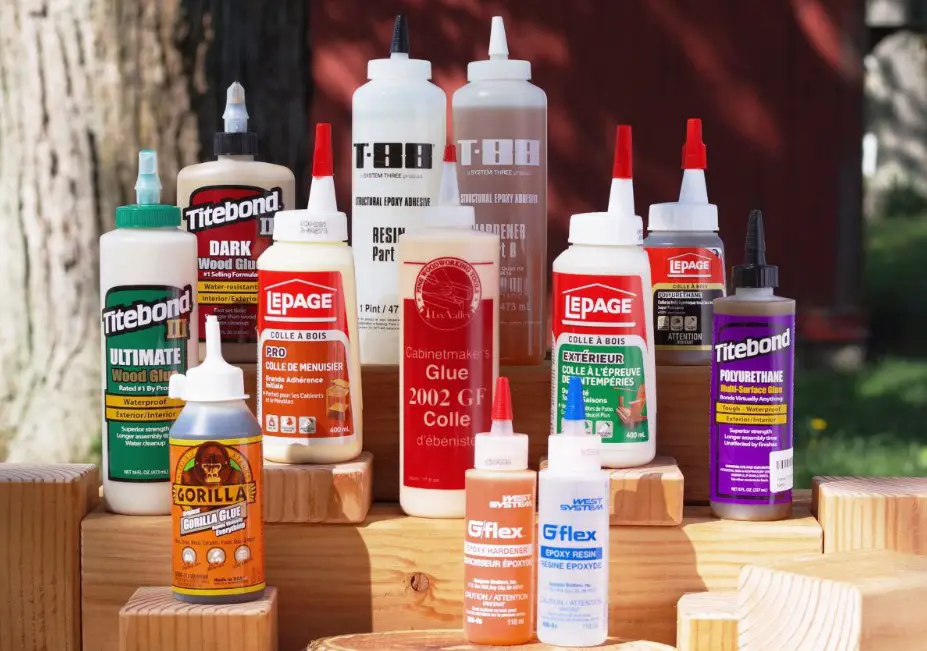
Comparison of wood glue drying time and curing time
In woodworking, drying and curing can be used interchangeably, but they are not the same thing.
When it comes to wood glue, drying means that they are strong enough to hold in place without the support of a stapler. If you can remove the clips from the attached joint, you can tell that the glue has dried.
On the other hand, wood glue needs more time to cure. How long does it take for wood glue to dry?
Wood glue curing time
Most wood glues take 24 hours to dry completely. The glue hardens when it reaches the point where the bond is strongest. Stronger than the surrounding tree
Wood glue often dries before it is completely dry.
Time to adjust the wood glue
The setting time of the wood glue is the time it takes for the wood glue to form with sufficient strength between the pieces of wood being joined. The adhesive is considered cured when it is visibly dry.
At this stage, the exposed parts of the adhesive usually form a strong film on it.
Tips to speed up the drying process
Let’s say you’re starting a wood project and need to use wood glue, but you’re short on time. Can the drying process be accelerated? Is there a way to get the moisture out of the wood glue faster?
Here are some ways to speed up the drying process:
- Use heat
- Try a hardener
- Use the air
It is always better to give the wood glue a natural drying cycle than to artificially speed up the process yourself. However, if you can’t wait, one of these will do.
Let’s dive into each technique, so you can get a better idea of the resources available to allow wood glue to bond faster than intended.
Heat
It is no secret that heat evaporates water.
The more heat is added to the liquid, the more it evaporates into the air. If you heat the glue a little, it will dry faster than expected.
Try moderate heat, such as a heat gun or hair dryer set to low heat… Be careful when applying and make sure you cover every part of the adhesive. Wood glue should dry in the shortest possible time.
Hardener
When using epoxy, you can use a unique strategy to make the glue dry faster. Add a little more hardener to the epoxy while stirring. When it’s time to add glue, the extra hardener helps the epoxy dry faster.
Be careful when mixing two ingredients in this ratio. After adding the hardener to the epoxy, you will have less time to work with the epoxy.
Air
We talked briefly about air circulation and its importance for a proper drying process. Adding extra air can help the glue get out of the water faster. The more air there is, the faster the wood glue dries.
There are several ways to spread air over wood glue. You can use a hairdryer and put it on low heat and power and then apply it on the wood glue. You can also invest in a fan to connect to your workstation.
You can even open additional windows and doors. Anything you can do to increase circulation will work well for the glue-drying process.
Glue thickness
The amount of glue you apply to your project will affect the drying time. For example, a thick layer of glue takes longer to dry than a thin layer.
Spread a small, fine bead of glue to ensure an even spread of glue that dries quickly for maximum strength. Try to avoid large lumps and uneven layers of glue as much as possible.
Avoid wet wood
If you glue two pieces of wood together and one of your pieces of wood is wet, it will also create a weaker bond.
Make sure the wood is dry before gluing. The wood may take some time to dry at first, but this will ensure that the bond is as strong as possible.
Use less glue
The thicker the glue, the longer it takes to dry. One way to ensure faster drying is to store as little as possible. Using less glue means the drying process takes less time, so you can finish your project faster.
There are different ways to reduce the amount of glue used when working with wood. One option is to use wood glue bottles for dosing. This will help you get the right amount of glue without over-pressing or making a mess.
Use pieces of dry wood
Avoid wet wood if possible. The excess moisture in the fibers will prevent moisture from evaporating from the glue, especially if you’re using water-based glue like PVA glue. Adhesive moisture usually enters the air directly from the adhesive, and some of it escapes through the substrate.
If the wood is already saturated with moisture, water particles from the glue cannot penetrate the wood. This can slow down the drying process. Using dry pieces of wood makes there is enough space for water particles to escape, which makes the wood glue dry faster.
Use undiluted glue
Some adhesives can often be thinned to make them more fluid for specific applications. While thinning the glue can serve a purpose, it also introduces more moisture that the glue must lose through evaporation to dry.
The higher the humidity, the more the adhesive dries. Leaving the adhesive without diluting it with water results in less moisture loss during drying.
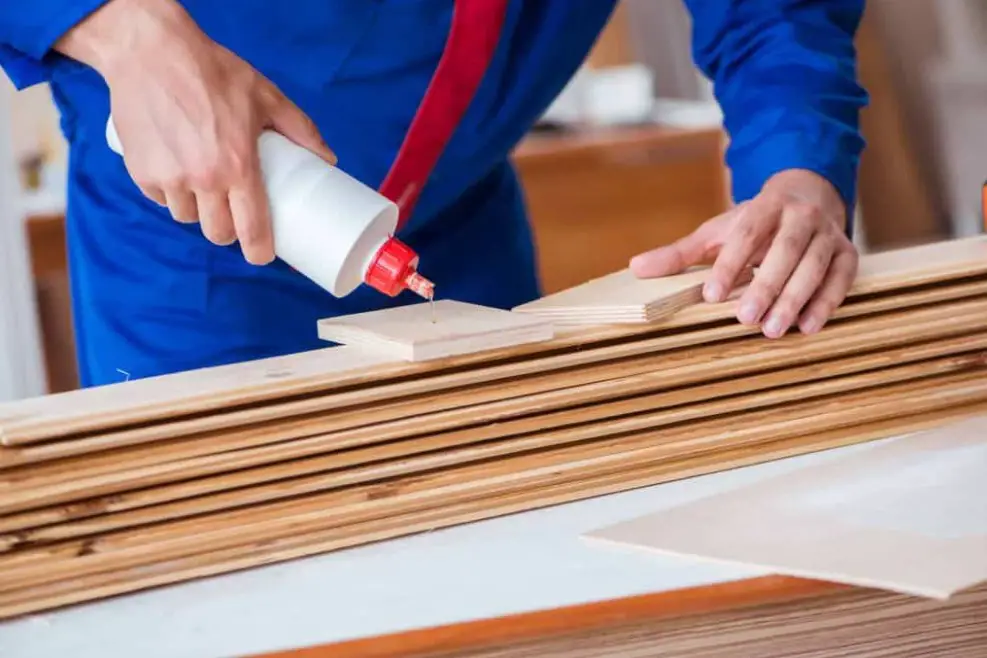
FAQ
How long should glued wood be clamped?
Leading brands such as Titebond and Elmers recommend 30 minutes to an hour of gluing in tension-free wood. However, pressure joints require a longer setting time for wood adhesive – often up to 24 hours. Be sure to leave the new joint undisturbed for at least 24 hours, so the boards stay in place.
How do you make wood glue harden faster?
As a general rule, heating is the preferred method of quickly drying the adhesive, and wood glue dry faster. However, you can also use fans, boosters, or compressed air. When applying glue, make sure the surface is dry and try to use, as little amount as possible, so it dries faster.
How long should wood glue set before sanding?
You may want to go ahead with your project, but quick glue joints can make a mess. Fortunately, you usually don’t have to wait that long. Most joints only need to be tightened for about an hour, after which they can be easily sanded.
Exceptions are loaded joints. It is best to allow these seams to dry and harden for a full day before applying pressure, for example, heavy grinding. For each joint, wait a full day to sand the joint more carefully.
Does wood glue set hard?
You may want to give it more time to fully solidify before fully using it all. Wood glue reaches its maximum hardness after hardening. Curing time may vary depending on the adhesive and other external factors. Ideally, this can take anywhere from 24 hours to several days.
What happens if you don’t let the wood glue dry?
It may seem easier to just throw everything together and move on with the project faster than recommended. The glue sets very quickly – why not continue with your project? What happens if you don’t let the wood glue dry?
If you don’t give the wood enough time to dry, you risk ruining your entire project. You may have to start over with parts assembly and preparation. This may sound boring, but make sure the wood glue is dry. Better safe than sorry when it comes to the drying process.
Why is my wood glue not drying?
Despite everything we’ve talked about, the wood glue may still not dry. What is the problem when this happens? Why does the wood glue not dry?
Make sure you use the right glue for the job.
Water-based adhesives do not work well with oiled wood or thicker pieces. Some options are not strong enough to hold the wood together. Make sure you choose the best glue for the project.
The temperature range may also be wrong. Too hot or too cold? How far are you from the recommended numbers? If there is a problem, try to call as soon as possible.
Does air flow through the glue, allowing for a proper drying process?
Finally, make sure you have a fresh bottle of glue. The glue may leak and not be as effective as before. If your glue is well past its expiration date, throw it out and buy a new one for your project.
Conclusion
Wood glue is the mainstay of numerous carpentry and woodworking projects. While it’s important to read the instructions, it’s also important to know how other factors, including temperature, humidity, and even wood species, affect drying time.
Understanding how long it takes for wood glue to fully dry is key to making sure that the bond between two pieces of wood is strong enough to hold them together for years to come.
Read also: Is acrylic paint good for wood: useful tips and paint examples for a paint job

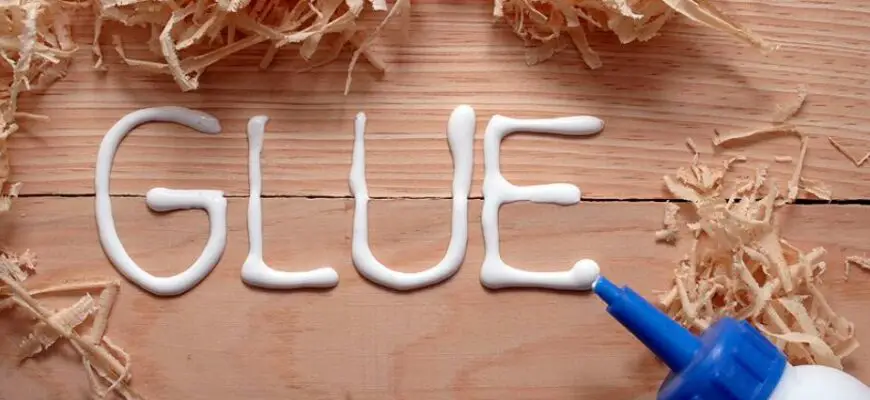
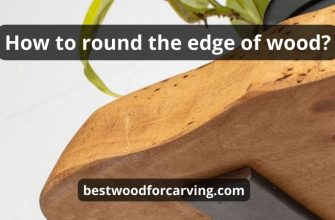
![How long for wood filler to dry? [Tips & Tricks] wood 26](https://bestwoodforcarving.com/wp-content/uploads/2024/01/wood-26-335x220.jpg)

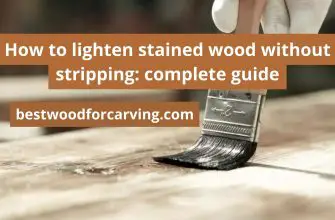
![How to remove white spots from wood furniture? [10 super-easy methods] How To Remove White Spots From Wood : Top 10 Best Tips](https://bestwoodforcarving.com/wp-content/uploads/2023/12/wood-12-335x220.jpg)




